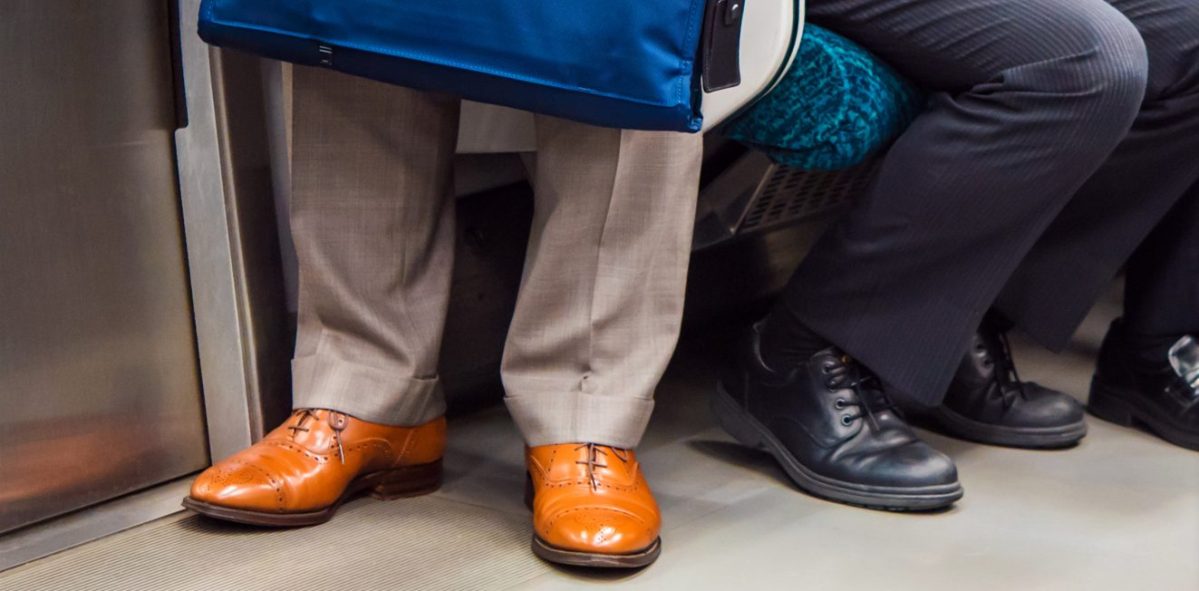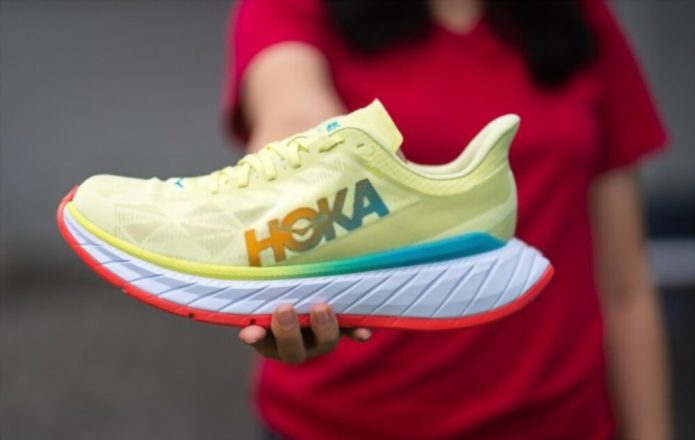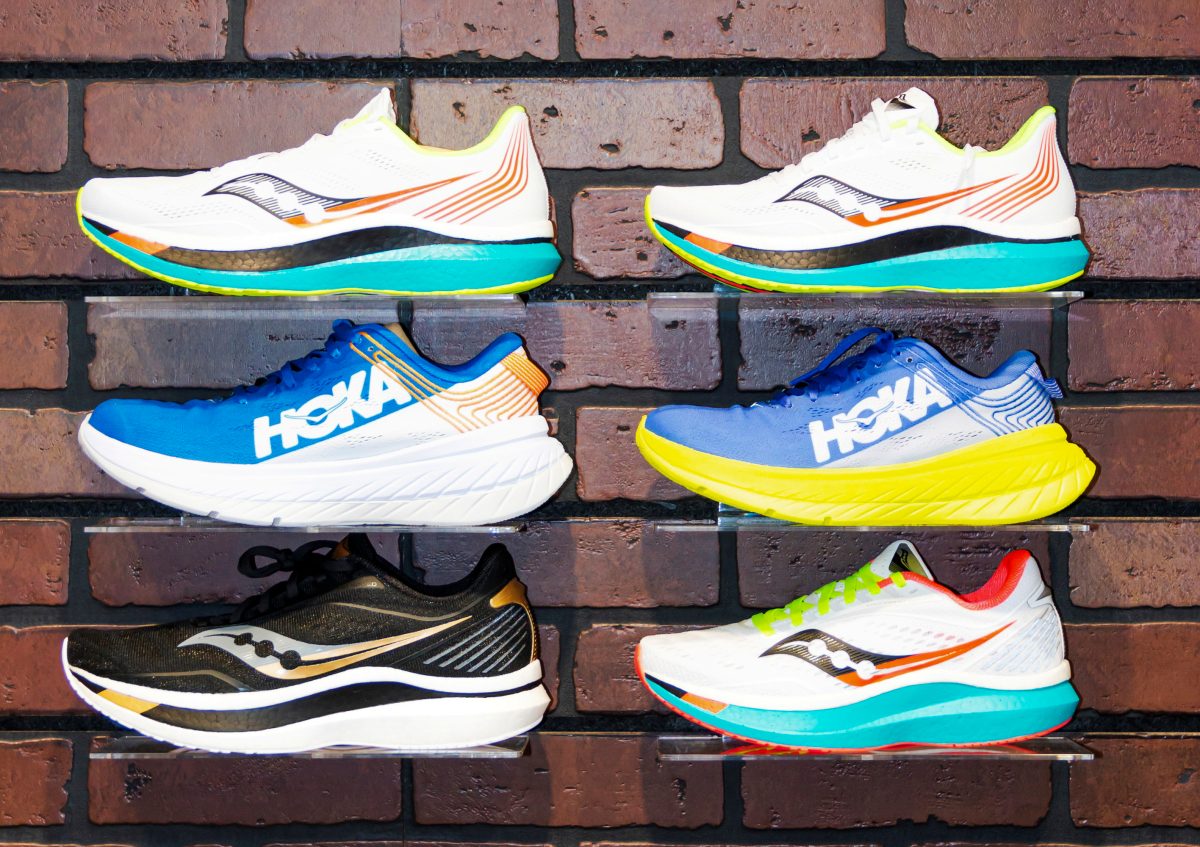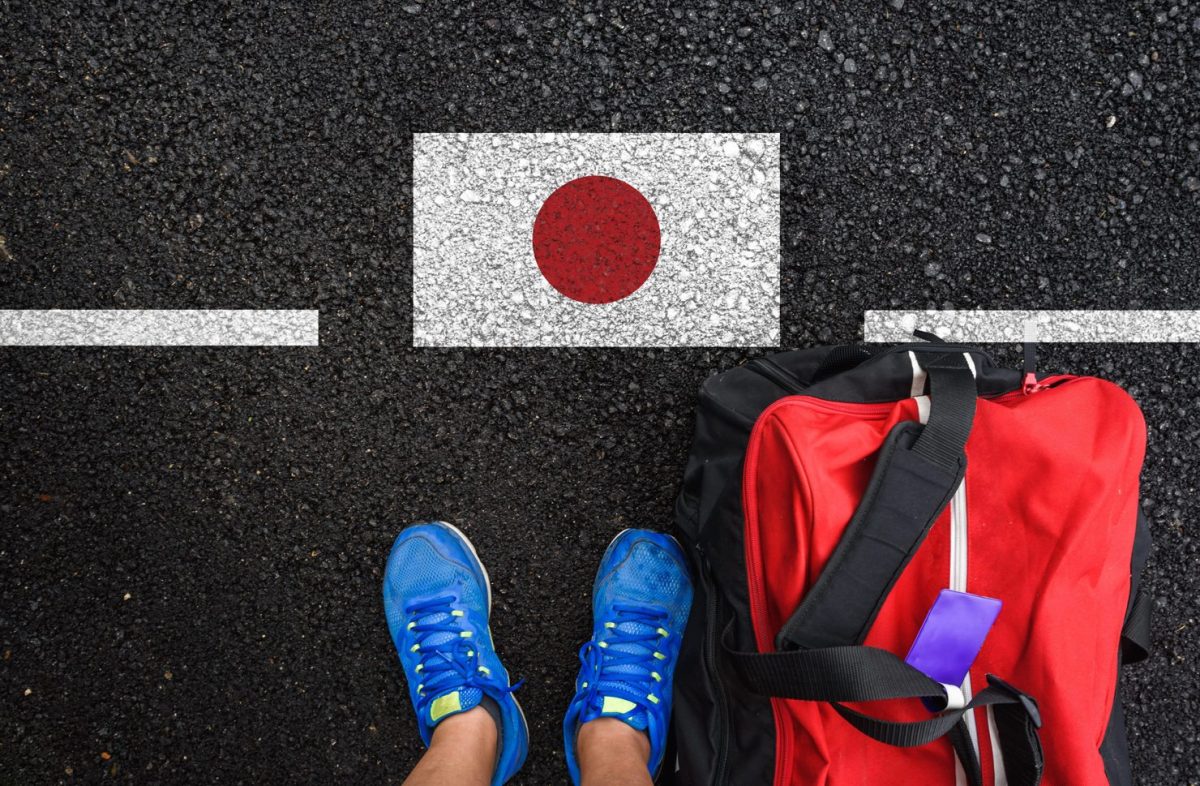Japan is renowned for its one-of-a-kind culture, traditions, and technological progress, making it a captivating nation. Situated in East Asia, Japan is distinguished by its diverse history and dynamic contemporary society. The Japanese are famous for their outstanding sense of fashion, and shoes have a notable impact on their style.
In Japan, shoe size charts differ from those used in many other countries. While most countries use the Brannock system, Japan uses a unique shoe size system that is based on the length of the foot in centimeters.

It is important to note that Japanese shoes tend to run smaller than shoes in Western countries, so it is advisable to consult a Japanese shoe size chart before making a purchase. In this post, we will examine the Japanese shoe size chart in further detail and examine some of its unique characteristics.
Japanese Shoe Size Chart For Men

Men’s shoe sizes in Japan are determined by the length of the foot in centimeters. Japanese shoe sizes for men typically range from size 24 (equivalent to US size 6) to size 30 (equivalent to US size 12). Additionally, Japanese shoe sizes for men may differ depending on the brand, as some brands may have unique sizing systems. Therefore, trying on shoes before buying is essential to ensure a comfortable fit.
| Japan | USA | UK | Europe |
| 24.0 | 6.0 | 5.5 | 39.0 |
| 24.5 | 6.5 | 6.0 | 40.0 |
| 25.0 | 7.0 | 6.5 | 40.5 |
| 25.5 | 7.5 | 7.0 | 41.0 |
| 26.0 | 8.0 | 7.5 | 41.5 |
| 26.5 | 8.5 | 8.0 | 42.0 |
| 27.0 | 9.0 | 8.5 | 42.5 |
| 27.5 | 9.5 | 9.0 | 43.0 |
| 28.0 | 10.0 | 9.5 | 43.5 |
| 28.5 | 10.5 | 10.0 | 44.0 |
| 29.0 | 11.0 | 10.5 | 45.0 |
| 30.0 | 12.0 | 11.0 | 46.0 |
Japanese Shoe Size Chart For Women

Women’s shoe sizes in Japan are also determined by the length of the foot in centimeters. Japanese shoe sizes for women typically range from size 22 (equivalent to US size 5) to size 26.5 (equivalent to US size 9.5). However, it’s important to note that Japanese shoes tend to run smaller than shoes in Western countries, so it’s advisable to consult a Japanese shoe size chart before making a purchase.
| Japan | USA | UK | Europe |
| 22.0 | 5.0 | 3.5 | 35.0 |
| 22.5 | 5.5 | 4.0 | 36.0 |
| 23.0 | 6.0 | 4.5 | 37.0 |
| 23.5 | 6.5 | 5.0 | 38.0 |
| 24.0 | 7.0 | 5.5 | 38.0 |
| 24.5 | 7.5 | 6.0 | 39.0 |
| 25.0 | 8.0 | 6.5 | 39.0 |
| 25.5 | 8.5 | 7.0 | 40.0 |
| 26.0 | 9.0 | 7.5 | 41.0 |
| 26.5 | 9.5 | 8.0 | 42.0 |
Japanese Shoe Size Chart Kids

To choose the right shoe size for kids, it’s essential to measure their feet accurately. Using a tape measure or ruler, measure the length of your child’s foot in centimeters while they are standing. Then, refer to a Japanese shoe size chart for kids to find the appropriate size. It’s advisable to choose shoes slightly bigger than the measured size to allow room for growth and ensure a comfortable fit.
| Japan | USA | UK | Europe |
| 9.0 | 0.0 | ||
| 9.5 | 1.0 | ||
| 10.0 | 2.0 | 2.0 | 18.0 |
| 11.0 | 3.0 | 2.0 | 18.0 |
| 12.0 | 4.0 | 3.0 | 19.0 |
| 12.5 | 5.0 | 4.0 | 20.5 |
| 13.5 | 6.0 | 5.0 | 21.5 |
| 14.0 | 7.0 | 6.0 | 23.0 |
| 15.0 | 8.0 | 7.0 | 24.0 |
| 15.0 | 8.5 | 7.0 | 24.0 |
| 15.5 | 9.0 | 8.0 | 25.5 |
| 16.0 | 9.5 | 8.0 | 25.5 |
| 16.5 | 10.0 | 9.0 | 26.5 |
| 17.0 | 10.5 | 9.0 | 26.5 |
| 17.5 | 11.0 | 10.0 | 28.0 |
| 18.0 | 12.0 | 11.0 | 29.0 |
| 18.5 | 12.5 | 11.0 | 29.0 |
| 19.0 | 13.0 | 12.0 | 30.5 |
| 19.5 | 13.5 | 13.0 | 32.0 |
| 20.0 | 1.0 | 13.0 | 32.0 |
| 20.5 | 2.0 | 1.0 | 33.0 |
| 21.0 | 2.5 | 1.0 | 33.0 |
| 21.5 | 3.0 | 2.0 | 34.5 |
How To Wear Shoes In Japan?

Although it is commonly known that Japanese custom involves taking off one’s shoes before entering a home, there is more to this practice than meets the eye. It’s essential to understand the underlying reasons before traveling to Japan.
Customs often develop for practical reasons, and the Japanese tradition of removing shoes indoors is no exception. Historically, small, traditional Japanese houses were constructed with tatami bamboo floor mats that were not only expensive but also easily soiled and challenging to clean. As a result, it made sense for people to stop wearing shoes indoors. Additionally, people usually consumed their meals while sitting on the floor, which meant that keeping dirty shoes away from food was crucial.
While this practice has evolved over time, it remains a prevalent custom in modern-day Japan. Whether you’re in a private home, hotel room, or restaurant, shoe removal is expected and accommodated with slippers. Every location that requires shoe removal is designed with this practice in mind, making it clear when and where shoes should be removed during your visit to Japan.
See more Korean shoe size chart in this article
Priorities come first
To begin with, planning for your trip to Japan is essential as you are aware that Japanese customs involve appropriate shoe etiquette. Avoid bringing impractical or extravagant footwear that takes up time or effort to remove. It is best to keep it simple. Additionally, it is advisable to ensure that your socks are in good condition, as many people will see your feet. This will help you avoid unwanted attention or embarrassment during your stay.
Leaving and entering a house
When entering or leaving home in Japan, it is customary to use the genkan, an entrance area situated just inside the front door. Typically, the genkan is slightly lower than the main area and features a different floor color or material. It’s important to treat the genkan as if it were an outdoor space. Upon entering the home, you will likely find slippers placed on the upper level, above the genkan. Simply step out of your shoes and into the slippers.
If there’s a designated cubby for shoes, place your footwear inside it. Otherwise, follow suit if you see other people’s shoes lined up on the floor. Typically, shoes are pointed towards the door for easy access when it’s time to leave. This is in keeping with tradition and makes it easier to put on your shoes in the genkan upon leaving.
It’s not just about the beds and bathrooms
Japanese change their slippers so many times. When inside a home, especially if you’re a guest staying overnight, it’s common practice to avoid wearing slippers on tatami mats in the bedroom area. Instead, it’s recommended to wear socks or go barefoot. You should be mindful of where you walk when wearing slippers to avoid damaging the tatami mats.
Furthermore, changing slippers is customary when moving from a living area to a bathroom. A separate set of slippers is typically provided inside the bathroom, along with a small wooden platform to facilitate changing footwear. It makes sense to wear different slippers in the bathroom than those worn in other areas of the house.
Going out on the town
When you’re out and about in Japan, it’s important to be mindful of shoe etiquette. Some restaurants require shoe removal and provide slippers, while others don’t. If you encounter a restaurant that requires shoe removal, you’ll typically find a genkan and a bench where you can sit and remove your shoes. The restaurant will provide slippers, but it’s not uncommon for women to carry shoe liners to avoid contact with the slippers. If you’re unsure, follow the lead of those around you.
Hotels and ryokans (traditional Japanese inns) also require shoe removal at the door. Visits to shrines, temples, and carpeted dressing rooms in boutiques may require changing into provided slippers. To avoid any missteps, observe the customs of those around you and follow suit. Remember, the key to proper shoe etiquette in Japan is to use your eyes more than your feet.
Why Should You Choose Japanese-made Shoes?

Have you ever wondered why Japanese shoes are so popular among fashion enthusiasts? While you can easily purchase shoes from any country in the world, once you try buying Japanese shoes, you may find yourself addicted to shopping for products from the Land of the Rising Sun. Consider ordering Japanese shoes online for the following reasons:
Price
The Japanese footwear industry has been known for its quality and craftsmanship for many years. Due to the vast number of shoe brands in Japan, the competition in the market has been fierce, leading to many advantages for consumers worldwide. One of the most significant advantages is the fact that you can often purchase Japanese shoes online at a much lower price compared to other marketplaces worldwide, including in your own country.
This is because Japanese shoe brands are constantly vying for the attention of consumers, and to stand out in a crowded market; they often offer great discounts and deals. Moreover, because the market is so competitive, Japanese shoe brands strive to provide the best possible quality and craftsmanship, ensuring that their products stand out in a sea of options. As a result, you get the opportunity to buy shoes from Japan that are not only reasonably priced but also of exceptional quality.
Read more Onitsuka Tiger Shoe Size Chart in here
Quality

The Japanese shoe industry is renowned for its exceptional quality and durability of the footwear. Japanese shoe manufacturers have a reputation for prioritizing customer comfort and ensuring that their products meet the highest quality standards. As a result, their shoes are not only durable but also offer superior comfort, making them the go-to choice for many customers around the world.
Furthermore, Japanese artisans have a long-standing reputation for being meticulous in their craft. Several Japanese shoemakers exhibit this level of attention to detail in their elaborate designs and sophisticated features. This reputation for quality and craftsmanship has made Japanese shoes highly sought after and appreciated by customers globally, leading to an increase in demand for Japanese shoes online.
Design
The unique blend of Western-style and traditional Japanese culture is one of the reasons why Japanese shoes are highly sought after across the world. This fusion has given rise to a distinctive style that is both modern and sophisticated yet still reflects the country’s rich cultural heritage. Japanese shoe manufacturers take pride in incorporating traditional elements into their designs, and each shoe is crafted with great attention to detail.
As a result, the final products are not only visually stunning, but they also boast exceptional quality that is hard to find elsewhere. The incorporation of Japanese culture into the design of each shoe makes them a symbol of the country’s unique style, and their popularity continues to grow as more people become familiar with their beauty and craftsmanship.
Brand
Japanese shoe brands invest significant resources and time in product design, material selection, and production processes to ensure that their shoes are of high quality and value. Some Japanese shoe companies also use sustainable materials and adopt eco-friendly production processes, making their products an excellent choice for environmentally conscious consumers.
As new high-end shoe brands from Japan have surfaced, there is now a greater selection of styles, colors, and materials available to consumers, allowing them to showcase their individual tastes and preferences through their shoe choices. Additionally, the focus on user emotions and pricing by larger companies has resulted in products that cater to a broader range of consumers, including those on a budget.
Find more Hoka shoe size chart in this post
FAQs
What is the standard Japanese shoe size system?
The standard Japanese shoe size system is based on the length of the foot in centimeters.
How do I convert my shoe size to the Japanese shoe size system?
To convert your shoe size to the Japan shoe size system, you need to measure your foot length in centimeters and then refer to a Japan shoe size conversion chart.
Are Japanese shoe sizes the same as US shoe sizes?
No, Japanese shoe sizes are not the same as US shoe sizes. They are typically one or two sizes smaller than US shoe sizes.
Are Japanese shoe sizes the same as European shoe sizes?
No, Japanese shoe sizes are not the same as European shoe sizes. They are typically one or two sizes smaller than European shoe sizes.
Can I find Japanese shoe sizes in stores outside of Japan?
It may be difficult to find Japanese shoe sizes in stores outside of Japan, but you may be able to find them online.
What should I do if I am between two Japanese shoe sizes?
If you are between two Japanese shoe sizes, it is recommended that you go with the larger size to ensure a comfortable fit.
Are Japanese shoe sizes consistent across all brands?
No, Japanese shoe sizes may vary slightly between different brands, so it is important to refer to the specific brand’s size chart for the most accurate sizing information.

